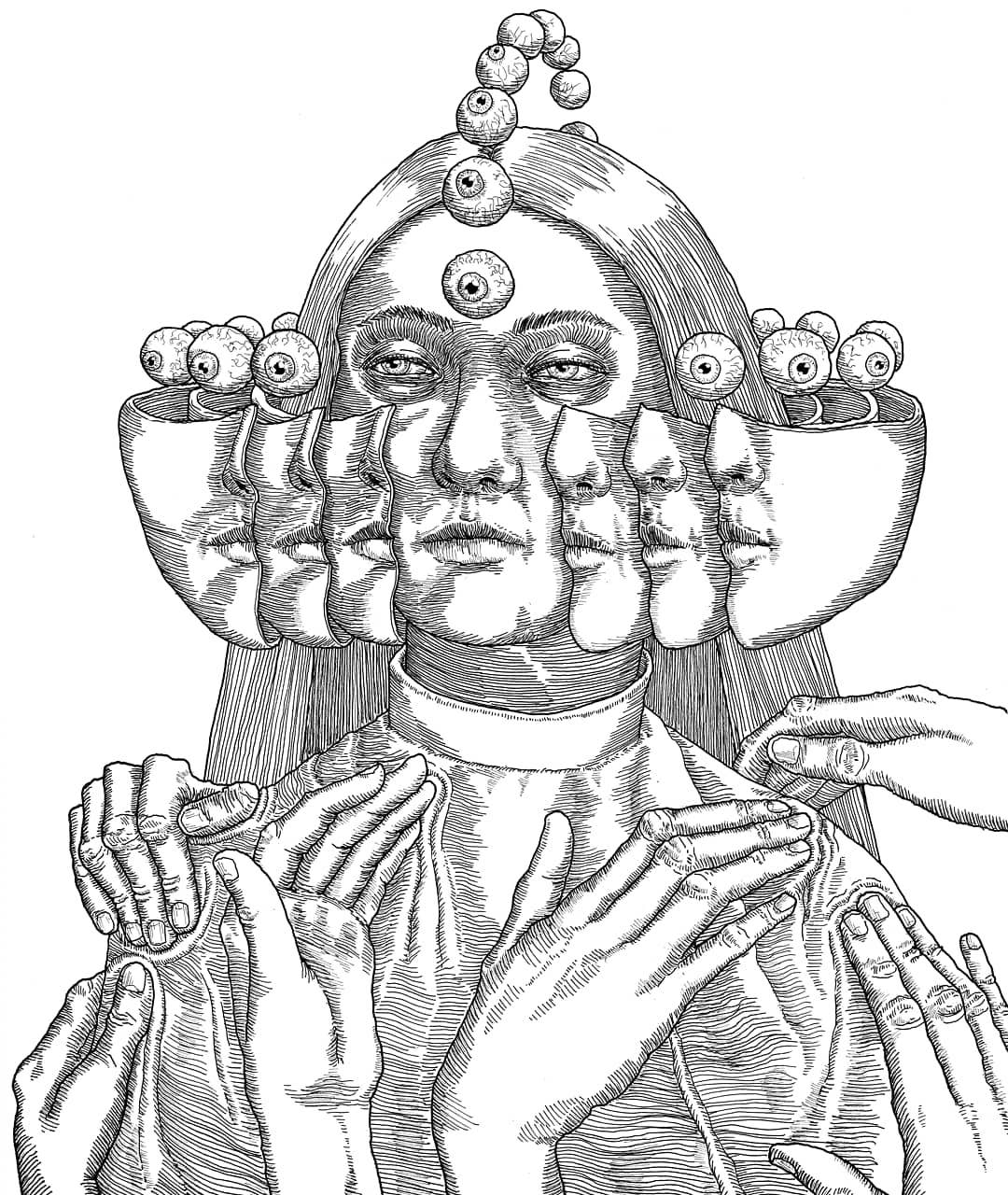
The late artist Tetsuya Ishida is still making an impression with his nightmarish paintings of young men in a state of disfigurement. His work has been described as a surrealistic portrayal of every day Japanese life. Of the 180 works he left behind after his death by a train accident in 2005, nearly all include self-portraits. Ishida’s images most certainly link his own childhood experiences with his observations of society. As a child growing up in Japan, Ishida felt constant pressure to meet the standards of young men his age, and was encouraged to study academics over art. Paintings, such as “Prisoner” (1999) which portrays a young boy growing beyond the capacity of his school walls, reflect on his memories. In fact, there are several iterations of the same image, pointing to the extremity of his frustrations as a student. When he refused to study science, his parents cut him off financially but by the late 1990s, he was a celebrated professional artist. Although these were happier times, the sadness in his art led most to believe that his death was a suicide. Often, his work disembodies the figure and blends it with machinery or objects. These images observe the monotony of a Japanese salary man’s routine, as in images like men being packed into a subway car like cargo. Another main theme is the training of young people to enter into economical servitude, and thus emotional isolation. Generally speaking, even non-Japanese viewers of Ishida’s works can appreciate the feeling of being forced to conform to work culture. From a highly personal perspective, his work captures its dehumanizing aspects, one that is rarely explored creatively in Japan and keeps his art compelling for new audiences. Take a look at more examples of Ishida’s works below.
















 The word "mythological" is often used to describe the work of Mexican artist
The word "mythological" is often used to describe the work of Mexican artist  New York based artist
New York based artist  Portuguese multimedia artist
Portuguese multimedia artist  In his riveting, surreal ink drawings, Peter Striffolino builds new creatures from humanity’s building blocks. Though the Los Angeles artist's practice encompasses these drawings, paintings, and animations, we'll be taking a look at his ink work in this post. In his monochromatic work, Striffolino’s talents in texturing and linework is on display.
In his riveting, surreal ink drawings, Peter Striffolino builds new creatures from humanity’s building blocks. Though the Los Angeles artist's practice encompasses these drawings, paintings, and animations, we'll be taking a look at his ink work in this post. In his monochromatic work, Striffolino’s talents in texturing and linework is on display.